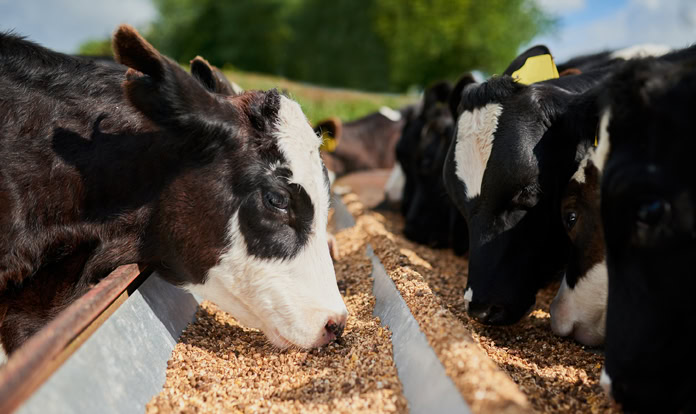The global animal feed market is influenced by various factors that shape the future of animal food production. These factors include the increasing world population and demand for animal protein, advances in production and feeding technologies, sustainability and environmental concerns, awareness of animal health and welfare, legislative regulations, economic prosperity, and disposable income. These driving factors have contributed to the growth of the global animal feed market, with market value expectations to increase significantly in the upcoming years.
Compound feed plays a crucial role in modern livestock farming by providing a balanced diet for farm animals. It consists of a premixed mixture of cereals, protein sources, and additives like vitamins, minerals, enzymes, and probiotics. Formulated to meet the specific nutritional requirements of different animal species and life stages, compound feeds ensure complete and balanced nutrition for animals, improving growth, reproduction, and overall health. These feeds also offer convenience to farmers, saving time and labor by eliminating the need to mix ingredients manually. Despite the higher initial cost of compound feed compared to individual ingredients, the reduced feed waste and optimized nutrient utilization lead to lower overall feed costs.
The global compound feed production data from the International Feed Industry Federation (IFIF) and Alltech shows a steady growth trend in the industry. The production is distributed among various animal species, with poultry feed accounting for the largest share, followed by pig feed, dairy feed, other ruminant feed, and aquaculture feed. The compound feed production varies across regions, with Asia-Pacific being the largest producer, followed by Europe, North America, Latin America, Africa, the Middle East, and Oceania.
Market growth expectations for the global animal feed market are positive, with reports from research firms forecasting an increase in market value over the coming years. Estimates from Polaris Market Research, Future Market Insights, Precedence Research, and Mordor Intelligence project the market size to reach billions of dollars by 2034, indicating a strong growth trajectory. Factors such as growing global population, technological advancements in feed formulation, sustainability initiatives, focus on animal health and welfare, livestock activities in emerging markets, and government regulations and subsidies are driving this market growth.
While the global animal feed market offers significant opportunities, there are also challenges that could potentially limit its growth. These challenges include volatility in raw material prices, competition for resources, strict regulations, epidemics and pandemics, economic downturns, competition from alternative protein sources, emerging markets, and the competitive environment. Addressing these challenges will be crucial for sustaining the growth of the animal feed market and ensuring its resilience in the face of evolving market dynamics.
In conclusion, the global animal feed market is a dynamic and diverse industry that caters to the nutritional needs of various animal species. With the right balance of driving factors and effective mitigation of limiting factors, the market is poised for continued growth and evolution in the years to come. By staying abreast of market trends, technological advancements, and regulatory developments, stakeholders in the animal feed industry can capitalize on emerging opportunities and navigate challenges to drive sustainable growth and profitability.




